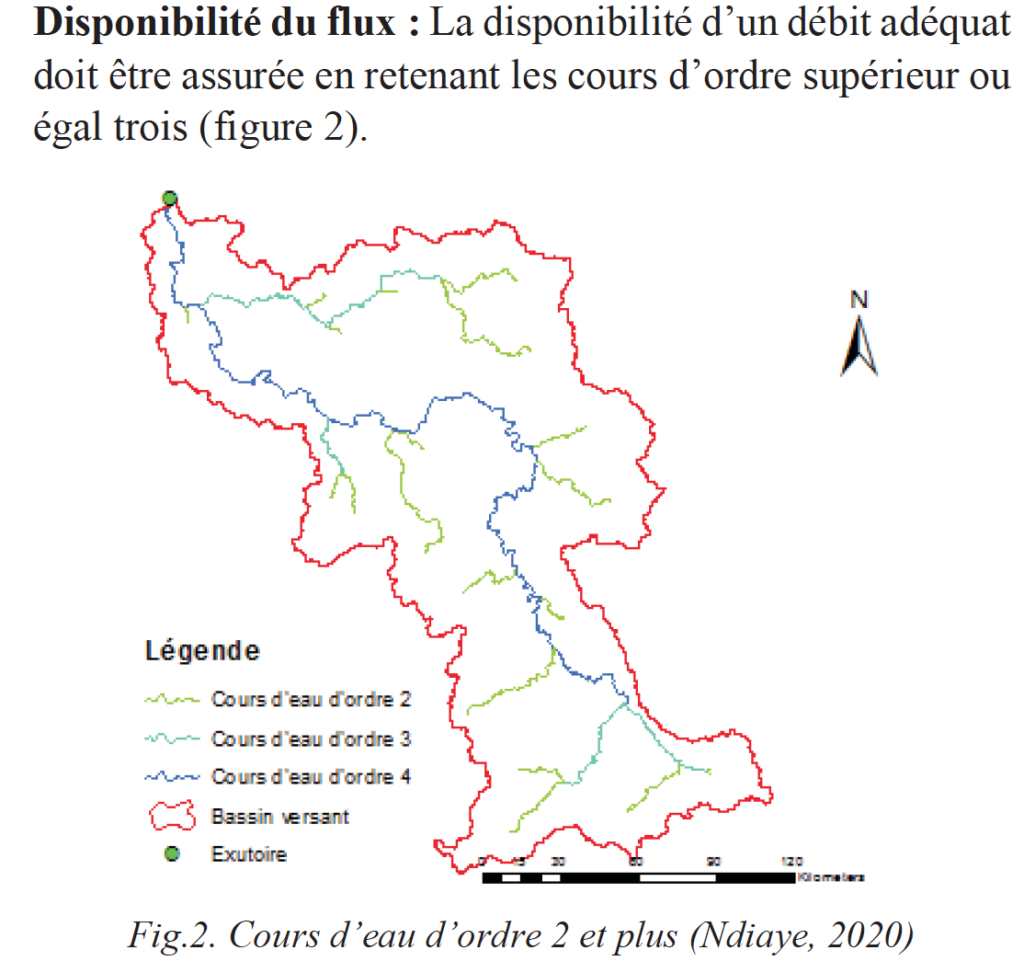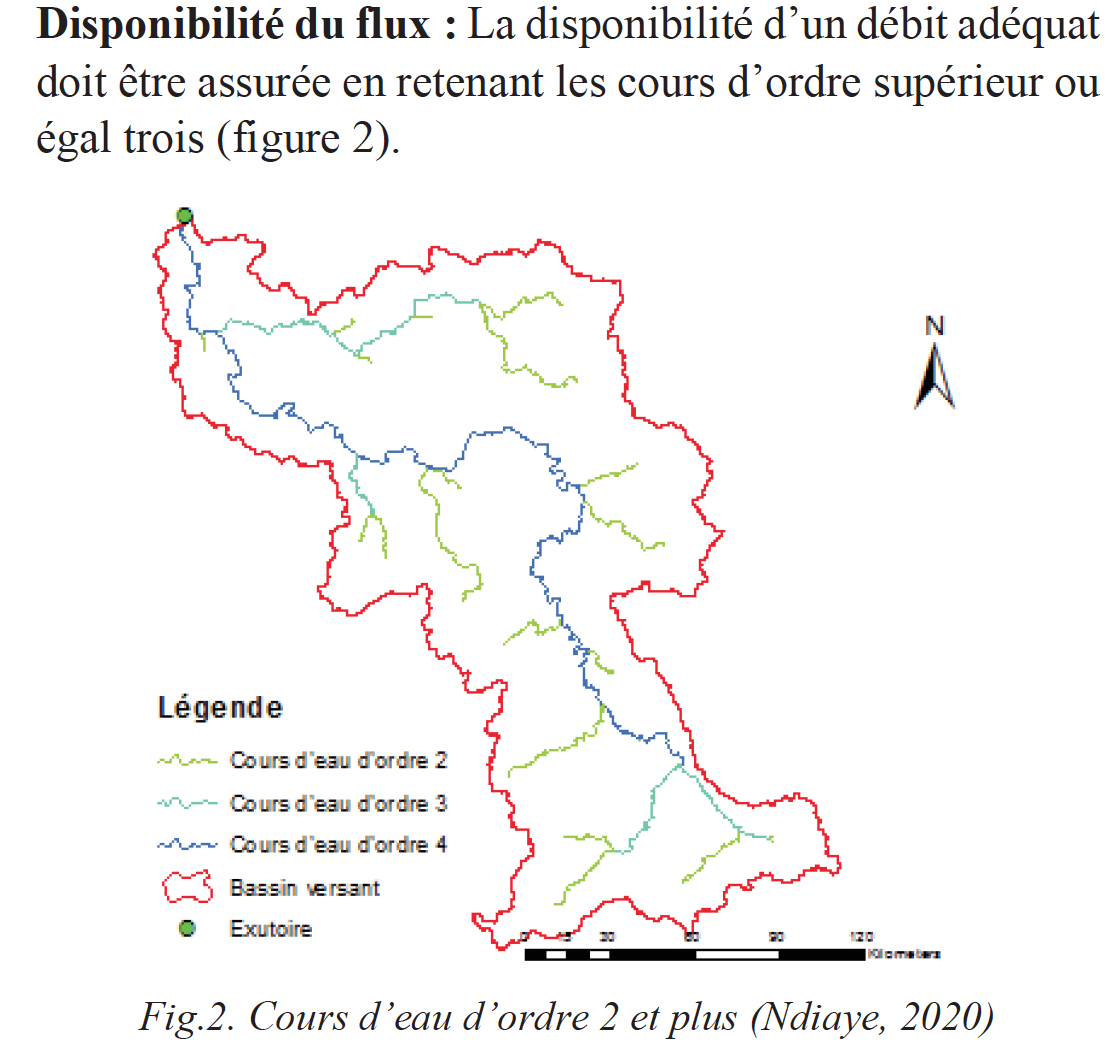Evaluation du potentiel en petite hydroelectricite du bassin versant de wassadou en utilisant le modele hydrologique SWAT
- Post by: SOAPHYS-KZ
- 16 juin 2021
- Comments off


http://dx.doi.org/10.46411/jpsoaphys.2020.02.20
Section de la parution: Informations de publication
J. P. Soaphys, Vol 2, N°2 (2020) C20A22;
Pages : C20A20-1 à C20A20-8
Informations sur les auteurs
Ndiaye Ibrahima1,*, Sambou Soussou1 , Leye Issa1, and Diaw Moustapha Traore Mamadou2
1 Laboratoire d’hydraulique et de mécanique des fluides, Université Cheikh Anta Diop de Dakar, Dakar, Sénégal
2 Centre international de formation et de recherche en énergie solaire, Ecole supérieure polytechnique,
Université Cheikh Anta Diop de Dakar, Dakar, Sénégal
Corresponding author e-mail:mouhafils@gmail.com
The increase in the amount of CO2 and global warming due to fossil fuels has made it necessary to explore other inexhaustible, available and non-polluting energy sources such as renewable energies. Hydropower represents 19% of the world production. Small hydropower plants are small and inexpensive production units. The hydropower potential depends on the flow and the head. In this study, we select sites for the evaluation of small hydropower potential in
the Wassadou watershed on the Gambia River. Using ArcGis, and the digital elevation model (DEM), 35 small hydropower (SHP) sites have been found on 11 streams flows. The soil water assessment tool (SWAT) hydrological model was calibrated for a 1990-1995 observation period and validated for the 1996- 1998 period. The accuracy of the model was confirmed by the coefficient of determination (R2 = 0.70) and the Nash-Sutcliffe efficiency criterion (NSE =
0.80). This model was used to generate daily flows at each site over the period 1990-1998 which allowed us to plot the flow duration curve. A total hydroelectric potential of 147421, 14229, and 1859 kW available at 40, 50, and 60% respectively at all 35 sites was evaluated. The results of this study provide a decision tool for policy makers and investors for the selection of suitable sites and implementation of small hydropower plants to meet energy needs in remote areas.
Abbasa, N., Wasimia, S.A. and Al-Ansari, N. (2016) Assessment of Climate Change Impact on WaterResources of Lesser Zab, Kurdistan, IraqUsing SWAT Model. Engineering, 8, 697-715. http://dx.doi.org/10.4236/eng.2016.810064
Abbas, N., Wasimi, S.A. and Al-Ansari, N. (2016) Model-Based Assessment of Climate Change Impact on Isaac River Catchment, Queensland. Engineering, 8, 460-470. http://dx.doi.org/10.4236/eng.2016.87043
Arnold J. G., Srinivasan R., Muttiah R. S. and Williams J. R., (1998). “Large Area Hydrological Modeling and Assessment. Part I: Model Development, Journal of the American Water Resources Association, Vol. 34, No. 1, pp. 73-89.doi:10.1111/j.1752-1688.1998.tb05961.x.
Ashish Pandey, Daniel Lalrempuia & S.K. Jain (2015) Assessment of hydropower potential using spatial technology and SWAT modelling in the Mat River, southern Mizoram, India, Hydrological Sciences Journal, 60:10, 1651-1665, DOI:
10.1080/02626667.2014.943669.
Arjumand Z. Zaidi, Majid Khan (2018) Identifying high potential locations for run-of-the-river hydroelectric power plants using GIS and digital elevation models, Renewable and Sustainable
Energy Reviews 89 (2018) 106–116, https://doi.org/10.1016/j.rser.2018.02.025.
Breezy (2018) small hydropower, Elsevier, chapitre 6, Hydropower. DOI: https://doi.org/10.1016/B978-0-
12-812906-7.00006-5, The Hydropower Resource, Hydropower Sites and Types of Hydropower Plants, Elsevier, chapitre 2, Hydropower. DOI: https://doi.org/10.1016/B978-0-12-812906-7.00002-8, Hydropower, chapitre 8 Power Generation Technologies. DOI:https://doi.org/10.1016/B978-0-08-102631-1.00008-0
Bousquet Cé, Samora I, Manso P, Rossi L, Heller P, Schleiss AJ (2017) Assessmentof hydropower potential in wastewater systems and application to Switzerland, Renewable Energy, doi: 10.1016/j.renene.2017.05.062. Christian
Bauer (2015) Assessment of Run-Of-River Hydropower Potential and Power Supply Planning in Nepal using Hydro Resources, thesis, P 1-97.
Da Silva, M.G., de Oliveira de Aguiar Netto, A., de Jesus Neves, R.J., do Vasco, A.N., Almeida, C. and Faccioli, G.G. (2015) Sensitivity Analysis and Calibration of Hydrological Modeling of the Watershed Northeast Brazil. Journal of Environmental Protection, 6, 837-850. http://dx.doi.org/10.4236/jep.2015.68076.


